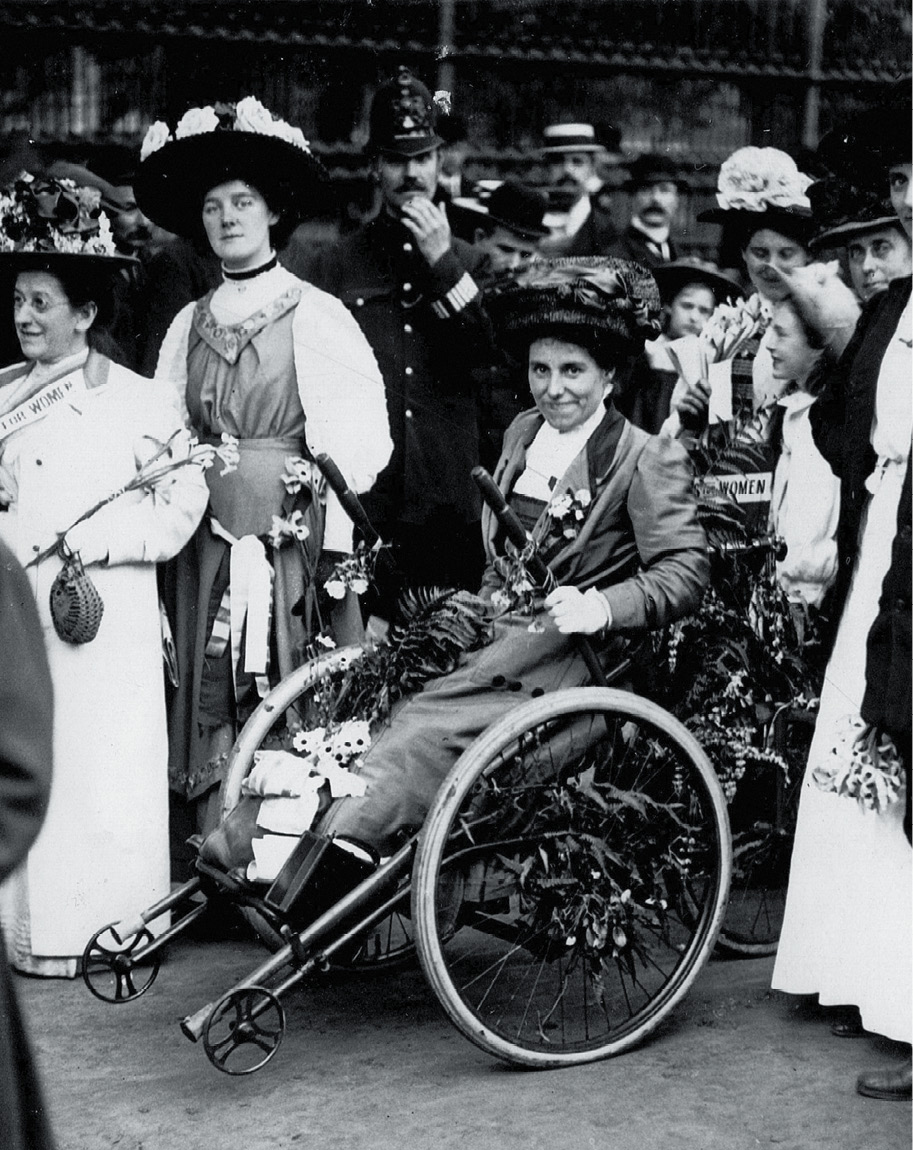Rosa May Billinghurst

Chelsea
In high school, we studied the traditional story of women’s suffrage: the Declaration of Sentiments from the 1848 women’s rights convention in Seneca Falls onward, as well as Mary Wollstonecraft’s famous manifesto, A Vindication of the Rights of Women. But much of what I knew about suffrage and women’s rights I learned from my mom, her friends, and our travels. I thought it bizarre that I hadn’t learned more about the women from around the world to whom we owed so much, and I decided to start seeking out their stories on my own—from Kate Sheppard, who led the women’s suffrage movement in New Zealand, the first country in the world to grant suffrage to all women, including indigenous Maori women, to the tough and determined Rosa May Billinghurst in England.
After surviving polio as a child in London, May, as she was known, decided that the use of her legs would be the only thing that disease would take from her. She had to confront the horrible prejudices that were all too common in the United Kingdom of the late nineteenth century against people with disabilities. In her twenties, May taught Sunday school, worked to raise awareness about the horrors of contemporary poverty in her community and around the country, and supported the temperance movement. Another cause she took up as a young woman would become a defining part of her life: women’s suffrage.
“The government authorities may further maim my body by the torture of forcible feeding as they are torturing weak women in prison at the present time. They may even kill me in the process for I am not strong, but they cannot take away my freedom of spirit or my determination to fight this good fight to the end.”
—ROSA MAY BILLINGHURST
In 1910, when she was in her midthirties, May took part in a protest against Prime Minister H. H. Asquith, who had blocked a bill that would have enfranchised one million women in Britain and Ireland. She was able to attend demonstrations and participate in protests because of her hand tricycle, which enabled her to use her arms to power herself, all while sitting or reclining. Hundreds of women were brutally assaulted by police that day, which became known as Black Friday. May was one of them. She recounted the event in the newspaper afterward: “At first the police threw me out of the machine and on to the ground in a very brutal manner. Secondly, when on the machine again they tried to push me along with my arms twisted behind me in a very painful position.… Thirdly, they took me down a side road and left me in the middle of a hooligan crowd, first taking all the valves out of the wheels and pocketing them so that I could not move the machine.”
May’s treatment by the police made her that much more determined to fight. Soon she was back at another protest, where she was arrested for attempting to use her wheelchair to ram through the crowd in London’s Parliament Square. In 1912, May was arrested again, and not for the last time, for her participation in the window smashing campaign, a coordinated protest against Parliament’s repeated failure to pass proposed legislation to grant women the right to vote. She was sentenced to hard labor, wheelchair and all. Her numerous arrests drew significant attention, with the press and even some of her fellow suffragettes pointing to her as a “cripple.” She didn’t shy away from the spotlight, as long as it furthered her cause; she once chained herself to the railing in front of Buckingham Palace.
May was force-fed in prison, as were many suffragettes who were arrested while protesting for their fundamental right to vote. None of this deterred her, and she continued to work for suffrage until 1918, when the UK granted property-owning women thirty and older the right to vote. Women in the UK wouldn’t receive the same voting rights as men until 1928, when voting rights were extended to all people twenty-one and older. May, along with many other courageous women, helped make that possible, even inevitable.
May’s political activism lessened after her cause was won, though she did continue to support other feminist efforts throughout her life. Her obituary in the Women’s Freedom League bulletin described her as having “a strong sense of humor, even perhaps, a mischievous one… full of life and courage and not to mention jollity.” A fierce believer in reincarnation, she thought “of this life as but one of many.” She proved, again and again, that she was ready to sacrifice her physical safety, even her life, for the cause she believed in. Though her story is too often forgotten, even in histories of the suffrage movement, her personal fortitude and dedication make her a standout in an era of fierce women.